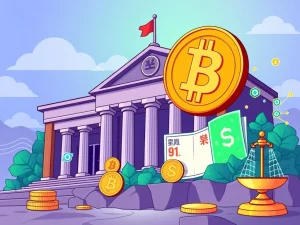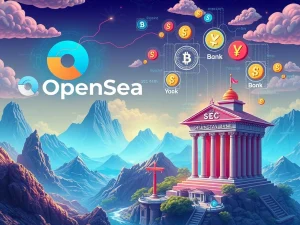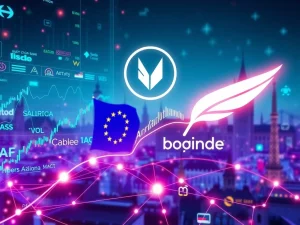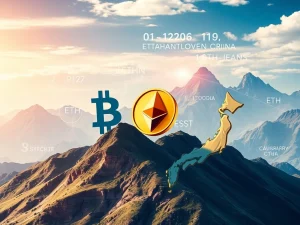SWIFT Blockchain: The Decisive Battle for Global Payments Dominance
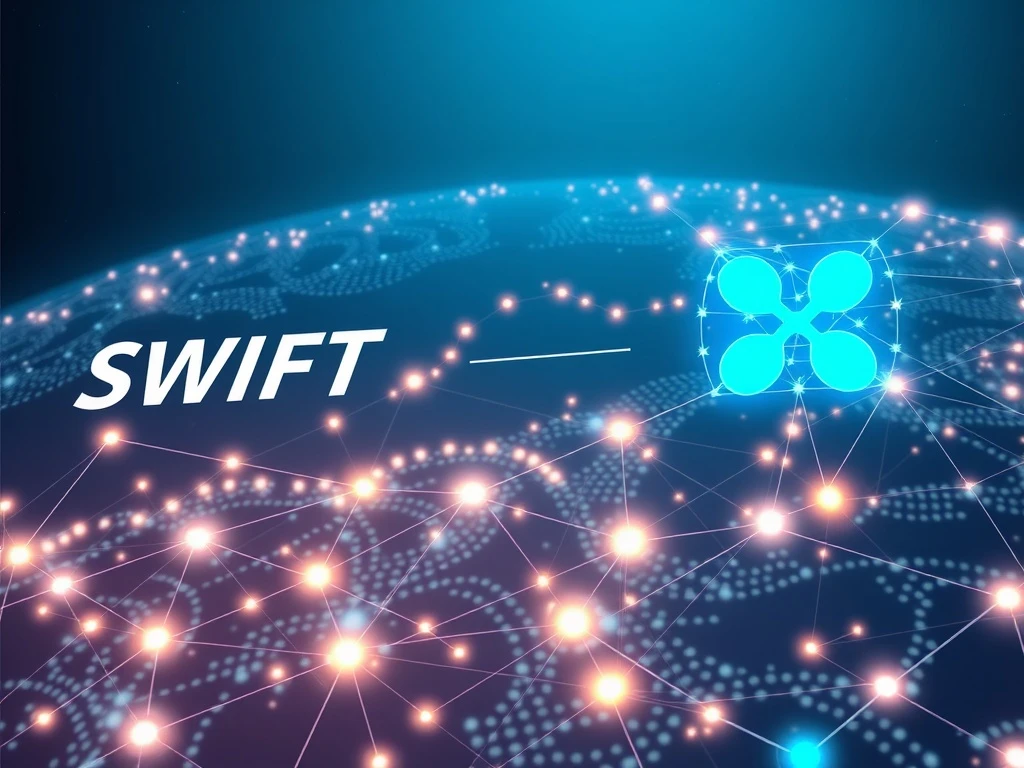
The landscape of cross-border payments is undergoing a dramatic transformation. For decades, SWIFT has been the unchallenged giant, facilitating trillions in transactions. However, a formidable challenger, Ripple, emerged with its innovative blockchain technology and the XRP Ledger. Now, SWIFT is fighting back, launching its own ambitious SWIFT blockchain initiative. This escalating competition promises to redefine how money moves globally. Understanding this pivotal struggle is crucial for anyone interested in the future of finance and cryptocurrencies.
The Established Giant: Understanding SWIFT’s Enduring Role
SWIFT, the Society for Worldwide Interbank Financial Telecommunication, forms the bedrock of international banking communication. It does not move funds directly. Instead, it provides a secure, standardized messaging network. This network allows banks and payment providers to exchange instructions for global transactions. When you send money overseas, your bank uses the SWIFT network. It transmits a secure payment message to the recipient’s bank. This message contains crucial details. For instance, it includes account numbers, transaction amounts, and reference codes. Each bank possesses a unique SWIFT/Bank Identifier Code (BIC). This ensures the message reaches its correct destination. SWIFT functions as a trusted intermediary in global finance. It offers encrypted, authenticated, and reliable messaging across over 200 countries. By standardizing communication, it significantly reduces errors. Furthermore, it accelerates settlements and supports regulatory compliance. This system has been the indispensable backbone of international money transfers for decades. It continues to process a vast volume of global financial traffic.
SWIFT’s Historical Impact and Operational Mechanics
SWIFT was founded in 1973 in Belgium. Initially, 239 banks from 15 countries joined forces. Their goal was to replace the slow, error-prone Telex system. They sought faster, more secure financial communication. Consequently, SWIFT revolutionized global banking operations. Its standardized messages, known as MT (Message Type) and MX (ISO 20022) formats, ensure clarity. They enable seamless processing across diverse banking systems. The network handles various transaction types. These include customer payments, bank transfers, treasury operations, and trade finance. This extensive reach and reliability have cemented SWIFT’s position. It remains central to the existing financial infrastructure. However, its traditional architecture, while secure, often leads to delays. International transfers can take one to five business days. This latency presents a significant challenge in today’s fast-paced digital economy. Therefore, the demand for instant, cost-effective solutions has grown exponentially. This demand opened the door for new technologies and competitors.
Ripple’s Disruptive Innovation: The Power of XRP Ledger
In contrast to SWIFT’s legacy system, Ripple introduced a blockchain-based alternative. Its core innovation centers around the XRP Ledger and its native digital asset, XRP. This technology aims to make cross-border payments faster and cheaper. International payments via XRP can significantly reduce or even eliminate pre-funding requirements. They accelerate settlement times to mere seconds. Furthermore, they drastically cut associated costs. Several real-world examples highlight XRP’s effectiveness. SBI Remit in Japan utilizes XRP for remittances. These payments flow to the Philippines, Vietnam, and Indonesia. Similarly, Pyypl integrated XRP via Ripple’s On-Demand Liquidity (ODL) service. This integration facilitates remittances between parts of Africa and Asia. It specifically targets unbanked users, expanding financial inclusion. Beyond traditional payments, XRP’s utility extends further. It is being integrated into travel and loyalty services. For instance, Webus/Wetour plans to use XRP, backed by a proposed $300-million reserve. This initiative will support blockchain-based vouchers and loyalty points. It targets Air China’s PhoenixMiles members. These members could, in the future, use XRP for overseas services. Examples include airport transfers and premium rides. Institutions increasingly view XRP as a key operational and treasury asset. SBI Holdings, for example, not only invests in Ripple but also integrates XRP. Its subsidiaries, SBI Remit and SBI VC Trade, use it. The company also maintains substantial XRP reserves. This demonstrates growing institutional confidence in XRP’s role in global finance.
The Technical Edge of the XRP Ledger for Ripple Payments
The XRP Ledger stands out as a fast, low-cost blockchain. It excels in cross-border payments, tokenized assets, and decentralized finance (DeFi) projects. It operates on a unique consensus protocol. This protocol differs significantly from traditional mining. Consequently, it reduces energy consumption and operational costs. This makes it more efficient than proof-of-work networks. Ripple’s On-Demand Liquidity (ODL) system leverages XRP as a bridge currency. This innovative approach allows financial institutions to send money globally. They avoid pre-funding accounts in destination currencies. Instead, they convert fiat to XRP, send XRP, and convert it back to fiat. This entire process typically settles in three to five seconds. This speed offers a stark contrast to SWIFT’s multi-day settlement times. Ripple’s ODL has proven its utility in various corridors. SBI Remit, for instance, has successfully used ODL to send money to countries like the Philippines and Vietnam. This technological advantage has allowed Ripple to carve a significant niche in the payment industry, challenging established norms.
SWIFT’s Counter-Move: The Ambitious SWIFT Blockchain Project
Recognizing the evolving demands of global finance, SWIFT is no longer solely playing defense. It is actively developing its own blockchain-based ledger. This initiative represents a significant strategic shift. SWIFT aims to compete directly with modern blockchain solutions like Ripple. The SWIFT blockchain project is being designed for extensive interoperability. It will connect public and private chains. Furthermore, it will handle regulated stablecoins and other tokenized assets. This positions it as a versatile infrastructure for the future financial landscape. A key feature of SWIFT’s blockchain project is its focus on real-time cross-border payments. The system intends to enhance existing digital infrastructure. It will not replace it entirely. This approach offers a smoother integration path for financial institutions. It reduces one of the biggest barriers to adoption. By embracing blockchain, SWIFT seeks to maintain its central role. This is particularly important as stablecoins and networks like the XRP Ledger gain traction. The project aims to keep banks within the SWIFT ecosystem. It modernizes its infrastructure and strengthens its position at the core of international finance. This strategic move signals SWIFT’s commitment to innovation and its determination to remain a dominant force.
Architecture and Ambition of SWIFT’s Shared Ledger
SWIFT’s shared ledger project is being developed in collaboration with Consensys. This partnership combines SWIFT’s extensive network expertise with Consensys’s blockchain development capabilities. The architecture emphasizes several critical aspects:
- Interoperability: Designed to connect diverse blockchain networks, ensuring seamless communication.
- Tokenized Assets: Support for various digital assets, including regulated stablecoins and other tokenized securities.
- Real-time Settlement: Aims to significantly reduce transaction times, moving closer to instant settlement.
- Enhanced Compliance: Built with regulatory requirements in mind, facilitating easier adherence to global standards.
This initiative represents more than just a technological upgrade. It is a strategic effort to future-proof SWIFT’s relevance. It addresses the growing demand for digital assets and faster settlements. SWIFT’s neutral stance on tokens and settlement methods could also provide an advantage. While Ripple’s model relies on XRP as a bridge asset, SWIFT’s upcoming ledger supports a wider range of regulated tokens. This flexibility could potentially weaken XRP’s dominance in certain Ripple payments scenarios. Especially if banks move towards multi-asset payment systems. The ambition is clear: to leverage its existing network to provide a modern, blockchain-powered solution that rivals emerging competitors.
The Direct Challenge: How SWIFT’s Blockchain Undercuts Ripple’s Edge
The emergence of SWIFT’s blockchain project creates a direct challenge to Ripple’s established advantages. SWIFT builds on its long-standing dominance in global banking. Its network already connects thousands of banks and financial institutions worldwide. This gives it a scale that Ripple may find hard to match. This vast network effect is a significant asset. Most institutions are already linked to SWIFT. Therefore, banks may find it easier to adopt its new shared ledger. This could be simpler than fully transitioning to Ripple’s system. For Ripple, convincing financial institutions to switch networks remains a major hurdle. Despite its technological superiority in speed and cost, overcoming institutional inertia is complex. Ripple payments have demonstrated efficiency, yet widespread adoption still faces resistance. SWIFT’s new initiative aims to bridge this gap. It offers similar technological benefits within a familiar ecosystem. For SWIFT, the primary challenge is improving liquidity. It must reach the same level of efficiency as Ripple’s ODL model. This involves ensuring sufficient funds are available for instant settlements across various currencies. If SWIFT can achieve this, its extensive network could make it a compelling alternative. This would directly impact Ripple’s market share in cross-border payments.
Strategic Advantages and Disadvantages in the Competition
SWIFT’s neutral stance on tokens and settlement methods provides a crucial advantage. While Ripple’s model relies on XRP as a bridge asset, SWIFT’s upcoming ledger supports a wider range of regulated tokens. This includes stablecoins and other tokenized assets. This flexibility could potentially weaken XRP’s dominance in certain cross-border settlements. Especially if banks move toward multi-asset payment systems. However, Ripple’s ODL system still offers faster and cheaper cross-border payments. Its dedicated infrastructure for XRP provides unparalleled speed. The XRP Ledger‘s design for high throughput and low fees is optimized for this purpose. This head-to-head competition pushes both entities to innovate further. Ultimately, the choice for financial institutions will depend on several factors. These include ease of integration, cost-effectiveness, regulatory alignment, and perceived risk. The battle for the future of global finance is intensifying.
Challenges Confronting SWIFT’s Blockchain Initiative
Despite its potential, SWIFT’s blockchain project still faces significant hurdles. These challenges could slow its rollout and adoption. One of the biggest challenges involves technical integration. Connecting the new system with existing banking infrastructure is complex. Ensuring technical compatibility without disrupting current services is a monumental task. SWIFT operates a long-established global messaging network. Making it work smoothly with a distributed ledger requires careful planning and execution. Another significant challenge is regulatory compliance across diverse jurisdictions. Rules vary widely on digital assets, stablecoins, and tokenization. These differing regulations can complicate cross-border deployment. Navigating this complex regulatory maze demands substantial effort and resources. Additionally, many financial institutions are inherently cautious. They may hesitate to adopt new infrastructure. This hesitation persists unless advantages are clear and risks are fully mitigated. Building trust and demonstrating tangible benefits will be critical for SWIFT. SWIFT also faces tough competition from Ripple’s long-standing partnerships. These partnerships specifically focus on real-time settlement. Unless SWIFT can demonstrate clear, measurable advantages, its blockchain project may be perceived as a supporting effort. It might not be seen as a leading solution in the competitive market for cross-border payments.
Overcoming Institutional Inertia and Market Perception
Institutional inertia represents another substantial obstacle. Banks have invested heavily in existing SWIFT infrastructure. They possess established workflows and compliance procedures. Shifting to a new system, even a modernized one, requires significant capital and operational adjustments. This resistance to change is deeply ingrained in traditional finance. Moreover, market perception plays a crucial role. Ripple has cultivated an image of innovation and efficiency. SWIFT, conversely, is often associated with legacy systems. Changing this perception requires more than just new technology. It demands a robust communication strategy. It also requires successful pilot programs and widespread adoption. The project must prove its scalability and security. It must demonstrate its ability to handle the immense volume of global finance transactions. Only then can it truly challenge the technological advancements offered by the XRP Ledger and other blockchain solutions. This battle is not just about technology; it’s about trust, reputation, and adaptability.
Will SWIFT’s Blockchain Challenge or Complement Ripple?
Looking ahead, SWIFT’s blockchain ledger could reshape global finance in several ways. One possibility is coexistence. SWIFT might maintain its dominant position in regulated banking. Meanwhile, Ripple could continue focusing on liquidity and settlement efficiency in emerging markets. This scenario allows both entities to thrive. They would cater to different segments or use cases within the broader payments ecosystem. Another possibility involves SWIFT leveraging its massive network. It could gradually overtake Ripple in key areas. This would reduce the industry’s reliance on proprietary tokens like XRP. If SWIFT’s solution proves equally efficient and more broadly accepted, banks might favor it. This outcome would significantly impact the future of Ripple payments. The outcome of this rivalry will fundamentally shape the future of cross-border payments. Ripple’s response will be crucial. It may involve deepening existing partnerships. It could also mean expanding into new verticals. The competition between these two giants could spark faster innovation. This innovation could lead to more real-world applications. This would likely occur through partnerships with fintechs and regional banks. Ultimately, the deciding factor won’t just be better technology. Other elements will also play a major role. These include network momentum, institutional confidence, and alignment with the broader goals of global finance. The future promises a dynamic and transformative era for international transactions.
This article does not contain investment advice or recommendations. Every investment and trading move involves risk, and readers should conduct their own research when making a decision.


